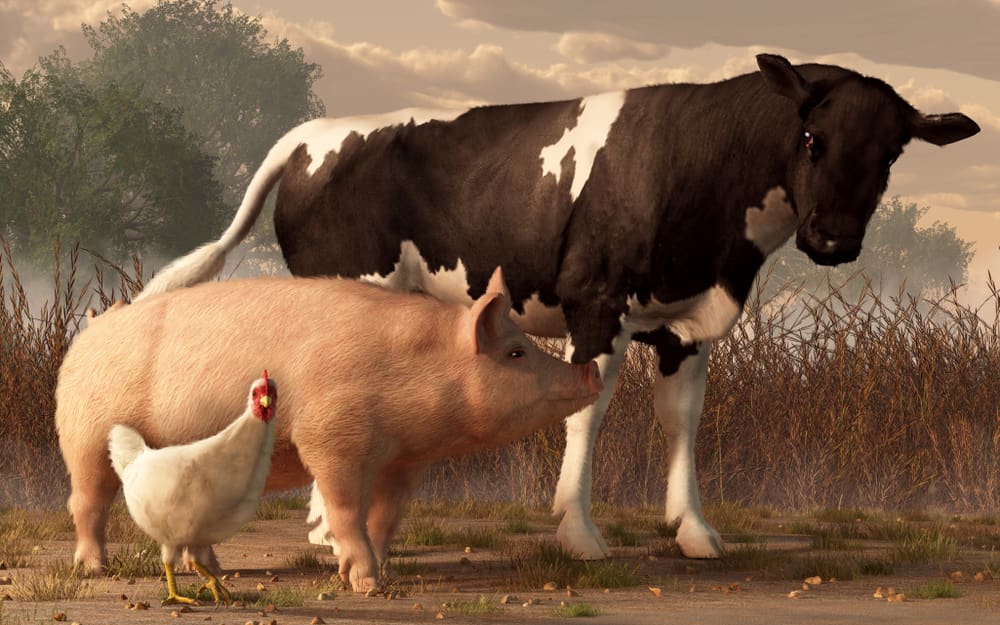
AUSTRALIA’S consumption of feedgrain is growing to reflect our increasing population and use of prepared feed.
Since the most recent report on domestic feedgrain use was published in 2018 by JCS Solutions for the Stockfeed Manufacturers Council of Australia, ABARES and other figures indicate considerable growth has been seen in the production of chicken meat, eggs, pork, and beef.
Estimations by Grain Central indicate beef feedlots, which now chomp through close to 2.5 million tonnes (Mt) of grain per annum, remain the biggest users, followed by poultry on 2.4Mt.
The shrinking national dairy herd makes it the only sector to have contracted in recent years, and its 11pc drop seen between 2018 and now has dropped its annual grain use to an estimated 1.6Mt, with pork on 1.2Mt.
Extrapolated 2018 figures had poultry and beef close together in the top two spots, and dairy close behind in third.
Dairy now looks to be more than 700,000t behind both beef and poultry, and if the trend continues, pork will leapfrog dairy into third spot by the end of the decade.
| Feed use 2018 | Grain use 2018 | Feed use 2025 | Grain use 2025 | Change | |
| Poultry | 2,942,415 | 1,912,570 | 3,678,019 | 2,390,713 | Up 25pc |
| Layers | 793,336 | 476,002 | 856,803 | 514,082 | Up 8pc |
| Pork | 1,406,675 | 1,097,207 | 1,589,543 | 1,239,844 | Up 13pc |
| Dairy | 3,111,008 | 1,866,605 | 2,768,797 | 1,661,278 | Down 11pc |
| Beef | 3,175,950 | 1,905,570 | 4,096,976 | 2,458,185 | Up 29pc |
Figures for Australian feedgrain use by sector are not publicly available, and these estimations use Federal Government or industry data to indicate changes in production between 2018 and 2025.
The 2018 figures come from the JCS Solutions report commissioned by the SFMCA, and the grain-use component comes from rules of thumb as mentioned in each section.
The poultry figure is predominantly chicken meat, with a small percentage each of duck and turkey.
The layer, or egg industry, as well as aquaculture, will be examined in an article to be published on Grain Central next month.
Here we look at the sectors, how rations have changed in recent years, and what might lie ahead.
Beef
Latest cattle on feed numbers indicate a new record was set in the December 2024 quarter of 1.45 million head, up 29pc from the 1.12M head on feed in the June 2018 quarter.
Working on the metric that grain accounts for 60pc on average of rations, and off the 2018 SFMCA report, this means Australian lotfeeders are using a total of close to 2.5Mt of grain per annum, up from 1.9Mt seen in 2018.
The sector is a volume user of wheat and barley, and is centred in southern Qld, the heartland of Australian sorghum production, and also a major cotton growing and ginning area.
Since 2018, the midst of a crippling three-year drought, the quest for efficiency means sorghum has lost its place as a ration staple, and cottonseed comes and goes.
Australia’s largest lotfeeder is Mort & Co, and its commodity buyer Luke Gaske said late last year, cottonseed had priced itself out of the ration due to exorbitant prices, and alternative sources were being utilised.
This is despite Mort & Co’s largest feedlot, Grassdale, having a plant which can dehull product sourced from nearby cotton gins.

Mort & Co commodity buyer Luke Gaske.
“The cottonseed plant has been undergoing some engineering upgrades at the back end of last year, which has come at a great time with the inflated prices,” Mr Gaske said.
“We are undergoing trials and testing of the upgrades and are optimistic of scaling up operations in the new season.
“The value we place on cottonseed and its byproducts is heavily influenced by other commodities that can be utilised in the ration; pricing must remain relative.
“Cotton meal, one of the major byproducts of the plant, is highly valued by the chicken and pig industries; they value the meal at a higher level than lotfeeders do.”
After the 2017-19 drought decimated sorghum production, the economic catalyst for sorghum to exit feedlot rations has been sustained demand from China, which since 2013 has been buying just about all the sorghum Australia can export.
“A lot of feedlots got out of using sorghum, and a lot of mills have been built or refurbished since and lack the capacity and infrastructure to process sorghum effectively.
“If yards don’t have the infrastructure to process sorghum effectively, sorghum prices itself out of the ration, and feed yards are happy to stick with what is working.
“A lot of bigger yards do run a steam-flake program, but to mill sorghum effectively, you need a surfactant.
“You must get that process right, and that requires the correct infrastructure and milling expertise that the industry has lost over the last 5-10 years.
“To warrant feeding sorghum, it must work economically into the ration; I work on 18pc discount relative value to wheat; in the current market, sorghum is overpriced.”
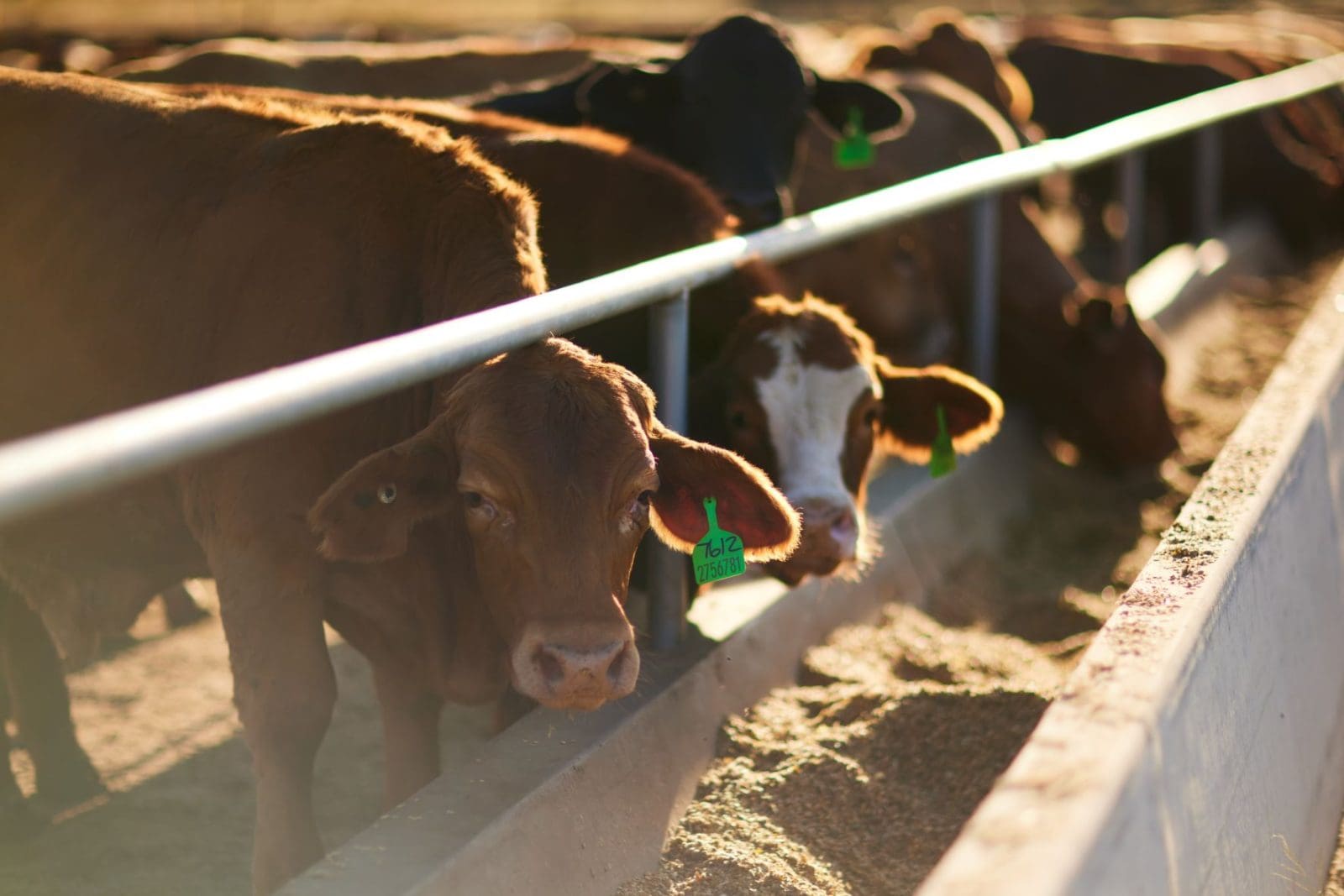
Mort & Co’s Grassdale feedlot. Photo: Mort & Co
China’s sorghum demand is valued by grain growers and traders, but means what was once an affordable input in feedlots, piggeries and poultry operations has priced itself out of the equation, and nutritionists in most cases have also swayed feedlots away from the red grain.
“Our ability to measure and obtain data is miles ahead of where we were 10-15 years ago; it’s now a game of inches, and we are chasing efficiencies in operations and conversion rates in our cattle.”
“We’re targeting average daily gains (ADG) of 2kg; if rations are not formulating correctly, and operations are not processing grain correctly, ADGs could be more like 1.8-1.85kg, and that can have a huge economic effect.”
Chicken
Chicken represents about 95pc of Australia’s poultry production, with turkey and the growing duck segment accounting for much of the balance.
Demand for chicken feed has driven much of the investment in Australian feedmills over the past decade, with Ingham’s at Murray Bridge in South Australia opening in 2019 to become the biggest feedmill ever built from scratch in Australia.
Since then, two other big mills, Ridley at Wellsford near Bendigo, and Weston Animal Nutrition at Hope Valley in Perth, have opened, both with chicken-feed supply contracts underpinning their operations.
Collectively, the three mills chew through around 750,000t of grain per annum, most of it destined for chicken producers.
Investment in the mills represents a consolidation of feed production in Vic and WA, and a huge expansion of the poultry sector in SA.
Meat bird rations sit at around 65pc grain.
Darwalla Milling feeds manager Gary Heidenreich said wheat and barley are interchangeable over much of that portion, with sorghum sometimes working in if it is at a big enough discount to white grain; because of Chinese demand, it rarely is.
“If sorghum was the standout winner, it could be 40-50pc, with wheat at 10-20pc wheat, and 10pc of barley,” Mr Heidenreich said.
Early last month, Darwalla was using barley at 20-30pc, and wheat at slightly more, with very little sorghum.
“You do need a minimum quantity of wheat to help bind pellets together, and a small percentage of barley for fibre.”
Pulses can account for around 6-8pc of the ration, and protein meal forms much of the balance.
“You’ll always need to have some soymeal in there.
“Soy has been up to 30pc, but you can get too much potassium and sodium, and that makes the birds thirsty.”
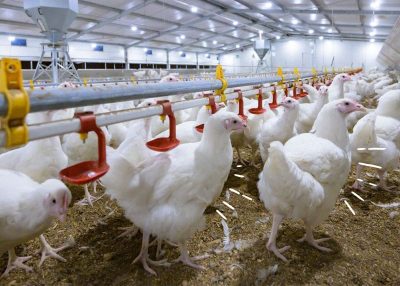
Behind lotfed beef, chicken production has shown the greatest increase since 2018. Photo: Ingham’s
Canola meal and cottonseed meal can also be included, depending on how they stack up price-wise versus nutritional composition against imported soymeal.
Mr Heidenreich said nutritionists “like to spread their risk” by having multiple inputs in a ration.
“If you’ve got three in the ration and one goes up or down on protein or energy or whatever, it can have a big impact; if you’ve got 10 inputs, you can have more variation within them.”
Whether growth in the poultry sector continues at its current rate remains to be seen.
Following on from the National Farmers Federation report released in April 2024, ABARES last month announced it would be conducting a review into the chicken-meat supply chain.
This could result in a code of conduct for the chicken-meat industry, as recommended by the NFF report, which can be expected to improve returns for growers.
Australian Chicken Growers’ Council chief executive officer Joanne Sillince said “double growth” was being seen in chicken consumption from increasing per-head consumption, and population growth.
However, Dr Sillince said returns for chicken growers were so low that the building of sheds at around $1.55 million each had virtually stopped.
“It was estimated 18 months ago that we’d need 700 new sheds in the next decade, and at the moment, shedding is going backwards because the economics are so bad that growers can’t afford to build sheds.”
Without a ready export market, Dr Sillince said “supply-chain thuggery” involving major retailers and processors was coming down on the heads of growers.
“Supermarkets beat up on processors because they can, and processors beat up on growers because they can.”
Dr Sillince said without a code of conduct, chicken was in the same boat as dairy was in 2018 but, as with dairy, an increase in chicken-meat production could be expected in the longer term.
“There will be growth over the next 10 years, but certainly over the next five years, it’s looking a bit shaky.”
Dr Sillince said the transition from cage to barn-laid eggs was at least giving chook farmers the rare option of an enterprise switch for their infrastructure.
“I haven’t had a single farmer move from chickens to eggs and be sorry about it.”
Dairy
According to Dairy Australia’s most recent data from November 2024, the national dairy herd sits at 1.33 million cows, down from 1.5 million in June 2018.
As cows switch between rations and feed during the year, depending on where they are in the lactation stage and seasonal conditions, this sector’s grain use is the hardest to quantify.
Dairy Australia’s National Dairy Farmer Survey data for 2024 reports that grain, grain mixes, and concentrates equate to an average of 1.8t per cow per annum.
Depending on price and requirements for energy versus fibre, dairy rations can include wheat, barley, oats, triticale, and corn.
When on rations, cows generally get through 4-7kg of cereals per day in prepared feed or rations mixed on farm.
Corn is commonly included in dairy rations, particularly at joining time, when cows have increased energy needs.
“We know from direct engagement with dairy farmers that we are seeing canola meal, corn, mostly whole corn-plant silage, and lupins comprise more of cows’ diets,” Dairy Australia national feedbase and nutrition lead Dr Rodrigo Albornoz said.
Norco AgriSolutions business manager Ross Bussian said on a dry-matter basis, grain in a cow’s ration was typically 20-40pc, with field peas and lupins common as protein sources, typically at around 5-15pc.
“When available, both are highly nutritious and cost-effective alternatives to protein meals, offering benefits in terms of protein quality, energy, and local sustainability.”
Hay and/or silage, plus some soy, canola, or cottonseed meal generally make up more than half a dairy ration.
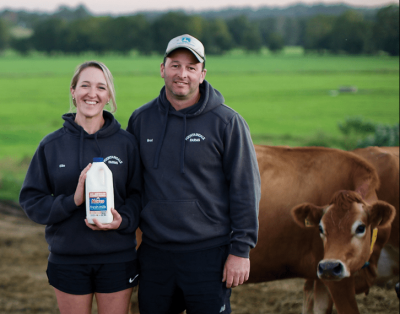
Ellie and Brad Winzer and family milk a large Jersey herd at Raleigh in NSW and generally require little grain-based feed to supplement pasture and silage. Source: Norco
Norco’s member base is is in northern NSW and southern Qld, and flooding can up the need for time on rations, and energy requirements within them.
“In the aftermath of flooding, such as the one caused by ex-TC Alfred, corn is likely to see higher demand as farmers rely on grain-based feeds to replace lost pasture and crops.”
Mr Bussian estimated that on average, a dairy cow in Australia can spend 26-30 weeks on pasture during the warmer months.
“The exact timing and duration can vary depending on the specific farm’s location and seasonal conditions.”
Pork
ABARES forecasts 2024-25 pig meat production to hit a record 478,000t, up 13pc from 424,210t in 2018.
Anecdotally, growth in the sector is expected to be moderate in all states bar Western Australia, where feedmills are preparing to cut their production of pellets for the live sheep trade, currently legislated to end in 2028.
This could see expansion of WA’s pork and poultry sectors.
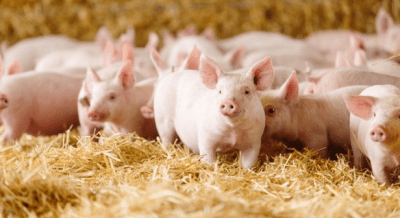
Photo: Australian Pork
By percentage, the pig diet has a highest grain content than the poultry, beef and dairy cattle diets.
Australian Pork Limited CEO Margo Andrae said an average baconer pig will eat around 194 kg of feed over its lifetime.
“Depending on its growth stage, 70-85pc of that ration will be grain,” Ms Andrae said.
“Wheat and barley can be interchangeable, although wheat has a higher energy and protein value than barley.
“Barley is more commonly used during periods of drought, usually due to price and availability.”
SunPork group nutritionist Sally Tritton said the pig was uniquely placed to utilise a lot of by-products and downgraded cereal and pulses.
“For any available raw material, we consider the cost, the quality, the full nutrient and antinutritional profiles, and if the product will fit our requirements.
“We combine the feeds to ensure that the animal being fed has a full nutrient profile; we can also use additional enzymes to ensure the feed is digested correctly.
“If it can be used without consequence, we prefer to utilise downgraded grain or pulse as we believe our role is to stay as much as possible out of the human food market.
“However, there are limits and some grain or pulse is so low in energy or protein or deemed to be unpalatable or physically difficult to utilise, and as such, is not worth the inclusion.
“In all cases we are looking at the total feed offered to the pig, making sure it is nutritionally sound, palatable, and cost effective.
“When the market has dictated, we have effectively used large quantities of downgraded sorghum, wheat, barley, peas, beans, chickpeas and vetch without impacting pig health or performance.”
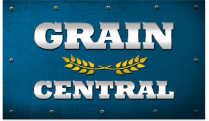
HAVE YOUR SAY